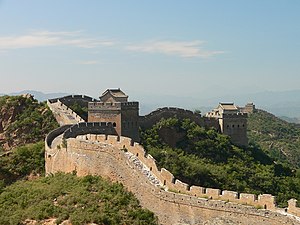| North Zhili | |||||||||
|---|---|---|---|---|---|---|---|---|---|
 The Great Wall, largely constructed in its present form as protection against the Northern Yuan when the Ming administered the area around it as Beizhili | |||||||||
| Beizhili | |||||||||
| Traditional Chinese | 北直隸 | ||||||||
| Simplified Chinese | 北直隶 | ||||||||
| Literal meaning | Northern Directly Ruled [Province] Northern Directly Administered [Area] | ||||||||
| |||||||||
| Beijing Province | |||||||||
| Chinese | 北京省 | ||||||||
| Literal meaning | Province of the Northern Capital | ||||||||
| |||||||||
Beizhili, formerly romanized as Pei-chih-li, Pechili, Peichili, etc. and also known as North or Northern Zhili or Chih-li, was a historical province of the Ming Empire. Its capital was Beijing, from which it is also sometimes known as Beijing or Peking Province. Beizhili mostly covered the area of the Yuan province of Zhongshu—the "Central Administration"—and took its own name—Chinese for "Northern Directly Administered Area"—from Beijing's status as the Ming's national capital following the Yongle Emperor move there from Nanjing, which oversaw Nanzhili or the Southern Directly Administered Area. In 1645, at the beginning of the Qing dynasty, the name of Beizhili was changed to Zhili. Under the Republic and People's Republic of China, it was divided into Hebei and the provincial-level municipalities of Beijing and Tianjin. (Small parts of what was once Beizhili were also ceded to Henan and Shandong.)
